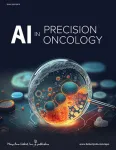(Press-News.org) NYU leadership - including recently inaugurated President Linda Mills and NYU Tandon School of Engineering Dean Jelena Kovačević - joined University faculty and partners on October 18th to cut the ribbon at the newly-minted NYU Nanofabrication (NanoFab) Cleanroom, a specialized research environment in which scientists and engineers can fabricate cutting-edge semiconductor chips to advance research on quantum science and engineering, precision medicine, neurotechnologies, next-generation communications technology and secure computing.
Located on NYU Tandon’s campus, the NYU NanoFab helps fulfill the promise of the bipartisan CHIPS and Science Act, signed into law by President Biden in 2022.
The CHIPS and Science Act aims to bolster U.S. chip manufacturing to meet growing global demand, and to support related research and development and workforce cultivation.
NYU NanoFab, the only such academic facility in Brooklyn, will be available to all NYU faculty and students, and to the academic and tech communities in Brooklyn and beyond. The state-of-the-art facility will allow researchers to make semiconductors that accelerate artificial intelligence advances, power quantum computing, produce new medical devices and develop other innovations that improve people’s lives and create connected and safe communities.
NYU and this core research space are part of the NORDTECH Microelectronics Commons consortium, including NY CREATES; the University at Albany College of Nanotechnology, Science, and Engineering; Cornell University; Rensselaer Polytechnic Institute; and IBM. Last month, NORDTECH received $40 million from the Department of Defense’s Microelectronic Commons Program.
NYU Tandon completed the initial construction of the NanoFab in 2018, funded in part with $1 million from the City of New York Office of the Brooklyn Borough President – a position held at the time by current New York City Mayor Eric Adams – as well as a $2.5 million grant awarded by the Higher Education Capital Matching Grants Program administered by DASNY. Today’s ribbon-cutting commemorates the facility’s upgrade to full operation under the leadership of NYU NanoFab Director Davood Shahrjerdi, and the acquisition of new next-generation fabrication and characterization equipment and other major enhancements of operational infrastructure.
The NYU NanoFab offers notable capabilities for processing emergent semiconductors and quantum materials, including:
Plasma-enhanced atomic layer deposition of high quality metal oxide and metal nitride dielectrics;
State-of-the-art ion beam etch system to thin down exotic materials, such as magnetic materials, with nanoscale precision enabled by secondary ion mass spectroscopy end point detection;
Atomic layer etch system for thinning quantum materials with atomic precision;
Sputtering system for deposition of superconducting metals;
Capability to support 200 mm substrates to facilitate collaboration with other cleanrooms, fostering innovation and advancement in materials research.
At NYU Tandon alone, the NanoFab will align with existing Centers such as NYU WIRELESS and the Center for Cybersecurity, as well as Areas of Excellence at the school ranging from Health to Urban and Sustainability. It will continue to drive university leadership in quantum computing, artificial intelligence and robotics.
Charles Schumer, U.S. Senator: “Congratulations to NYU on the opening of its newly minted Nanofab Cleanroom. This facility will help make sure the technologies of the future are researched, developed, and manufactured right here in New York. This New York City and Upstate New York research partnership is what I envisioned when leading the charge to pass the transformational CHIPS & Science Act. I will continue to do everything to make sure CHIPS and Science delivers for New York, so we can preserve America’s lead on chips, and drive the next wave of tech jobs and prosperity.”
Eric Adams, New York City Mayor: “New York City is the global hub for innovation and developing the industries of tomorrow — today. I am proud that, as Brooklyn borough president, I supported and invested $1 million in the initial construction of New York University’s Nanofab cleanroom. This new state-of-the-art facility represents our city’s ability to break new ground in technology, attract the best and brightest minds, and constantly look towards building a better future.”
Linda G. Mills, NYU President: “NYU Tandon’s new Nanofab cleanroom in Brooklyn will be a state-of-the-art laboratory where our world-class scientists, scholars and students—as well as our partners and collaborators from around the city—can harness their ingenuity and innovative prowess to advance scientific discoveries while boosting both New York’s economy and burgeoning tech sector.”
Jelena Kovačević, Dean of NYU Tandon and William R. Berkley Professor: “This nanofabrication cleanroom will allow us to continue to work across Tandon’s seven areas of research excellence. This room will not only help only spur the economy, but will ensure that Tandon researchers are creating next-gen chips right here in Brooklyn.”
Stacie Grossman Bloom, Vice Provost for Research and Chief Research Officer, NYU: “The opening of the nanofabrication cleanroom in Brooklyn is just another example of how NYU is leading the way when it comes to cutting-edge innovation. The cleanroom will allow faculty from across our university to drive innovation, tap into Chips and Science opportunities and align with industry for the benefit of society.
Greg Gabadadze, Professor of Physics and Dean for Science, NYU Arts and Science: "I'm delighted to see the Tandon School invest in the state of the art nanofabrication facility, with excellent young leadership supporting far reaching prospects of interdisciplinary
basic and applied science, and engineering at NYU. This facility is bound to elevate NYU's efforts in the fields of new materials design, manipulation, and applications, bringing together researchers from the fields of chemistry, physics, biomedical materials and engineering."
Davood Shahrjerdi, Director, NYU Nanofabrication Cleanroom; Associate Professor of Electrical and Computer Engineering, NYU Tandon: “I am grateful for the opportunity and support to lead the effort in shaping the vision and infrastructure of the Nanofab. After two demanding years of enhancing infrastructure and experimental research capabilities, I am excited that this project came to fruition and this core research laboratory is now available to support the cutting edge research on functional materials and nanoscale devices. Nanofab's mission is to equip our community with cutting-edge experimental capabilities to advance the frontiers of semiconductors and quantum materials, while empowering us to educate the next generation of scientists and engineers equipped with critical knowledge for tackling the grand challenges of our time. Our mission aligns perfectly with the goals of the CHIPS and Science Act.”
Andrew Gounardes, New York State Senator: “New York University has long been at the forefront of the innovation and creativity that New York is known for, and its Tandon School of Engineering is no different. I'm proud to join in celebrating the opening of a best-in-class Nanofabrication Cleanroom right here in Brooklyn that will help boost technological discovery, the next generation of engineers, and our borough's economy, all at once.”
Lincoln Restler, NYC Council Member: “The opening of the NYU Tandon School of Engineering Nanofabrication Cleanroom will spur innovation in critical fields, from wireless connectivity to urban sustainability. We are fortunate to have this dynamic hub in Downtown Brooklyn."
NYU Faculty Comments on the Nanofab:
Eray Aydil, Alstadt Lord Mark Professor & Chair of Department of Chemical and Biomolecular Engineering, NYU Tandon: “The Nanofab will enable our faculty to design and prototype innovative microreactors and lab-on-a-chip devices, that can revolutionize green chemistry and energy conversion and storage. Our faculty and students will be able to create precision microreactors and electrochemical and fuel cells that will facilitate the discovery of new chemical reactions and processes that minimize waste, lower costs, and reduce environmental impacts.”
Rose Faghih, Associate Professor of Biomedical Engineering, NYU Tandon: "NYU's Nanofabrication facility can help accelerate development of enhanced wearable biosensors for collecting dynamic physiological data. I'm using this data to develop algorithms that provide clinically relevant information for detection and management of health conditions in everyday settings, which will arm more people with tools to take charge of their own health."
Ramesh Karri, Professor of Electrical and Computer Engineering, NYU Tandon; Co-Founder and Co-Chair, NYU Center for Cybersecurity: “The Nanofab will be an invaluable resource for graduate and undergraduate computer engineering students. I look forward to using the Nanofab to further investigate device-level and material-level hardware security issues, such as camouflaging and electromagnetic interference (EMI).”
Katsuo Kurabayashi, Professor & Chair of Department of Mechanical and Aerospace Engineering, NYU Tandon: “The Nanofab will provide mechanical engineers with tools and resources to explore new exciting and impactful research frontiers. This includes the creation of nanoscale materials with extraordinary mechanical properties, the development of micro/nanoscale mechanical sensors and actuators, the design of water repelling nanostructured surfaces, nanomechanical testing devices, the construction of nanoscale soft robots for drug delivery to cells, the incorporation of energy harvesting nanoscale generators, among other capabilities.”
Farshad Khorrami, Professor of Electrical and Computer Engineering; Director
Control/Robotics Research Laboratory, NYU Tandon: “The nanofab facility will play a pivotal role in advancing research and innovation across various disciplines, enabling studies in materials science, electronics, biotechnology, and nano-machines and robotics. With state-of-the-art equipment, NYU nanofab empowers faculty and students to manipulate matter at the nanoscale, to create novel materials, to miniaturize devices for robotics and autonomous vehicles, and to innovate technologies in chip design and cyber security. Additionally, these facilities offer valuable hands-on training opportunities for students, fostering a new generation of scientists and engineers equipped with the skills needed to support workforce development needs of the CHIPS Act. Congratulations to Prof. Shahrjerdi for establishing the NYU nanofab.”
Miguel Modestino, Donald F. Othmer Associate Professor of Chemical Engineering and Director, Sustainable Engineering Initiative, NYU Tandon: “As the world moves towards a net-zero future, it is critical that we accelerate the development of technologies for decarbonization. These climate technologies – from new photovoltaics and batteries, to sustainable chemical reactors – rely on processes at the nanoscale and are driven by advanced materials. The NYU Nanofab will enable research that will expand our understanding of these nanoscale processes, allow us to explore thousands of material combinations, and to test hundreds of microreactors at once. The power of miniaturization enabled by the Nanofab will transformationally expand our research throughput and enable the integration with AI tools that will speed up our discoveries, helping us to develop solutions at the speeds required by the climate crisis.”
Theodore Rappaport, David Lee/Ernst Weber Professor of Electrical and Computer Engineering, NYU Tandon; Founding Director, NYU WIRELESS: “The Nanofab center provides truly remarkable research capabilities rarely found in academia. This new resource is a boon for NYU WIRELESS and its constituents, and I’m so pleased that Prof. Davood Shahrjerdi has brought this amazing resource to life through his tireless efforts.”
Elisa Riedo, Herman F. Mark Professor of Chemical and Biomolecular Engineering, NYU Tandon: “The new NYU Nanofab facility will be instrumental for the Engineering and Physical Sciences community at NYU to grow in terms of innovation, research and training. The NYU Tandon engineering school is entering a new phase and only state of the art nanofabrication and nanocharacterization facilities will allow researchers to be competitive with other schools and nations in areas such as quantum materials, nanoelectronics, and nano-biotechnology.”
Javad Shabani, Associate Professor of Physics and Director of the Center of Quantum Information Physics (CQIP), NYU: “NYU Nanofab is vital for our community to make precise semiconductor to quantum devices at nanoscale to research the peculiar laws of quantum physics. It provides researchers at CQIP an opportunity to try new ideas and push the boundaries of fabrication and packaging for quantum computing, communication and sensing.”
New York University Tandon School of Engineering
The NYU Tandon School of Engineering is home to a community of renowned faculty, undergraduate and graduate students united in a mission to understand and create technology that powers cities, enables worldwide communication, fights climate change, and builds healthier, safer, and more equitable real and digital worlds. The school’s culture centers on encouraging rigorous, interdisciplinary collaboration and research; fostering inclusivity, entrepreneurial thinking, and diverse perspectives; and creating innovative and accessible pathways for lifelong learning in STEM. NYU Tandon dates back to 1854, the founding year of both the New York University School of Civil Engineering and Architecture and the Brooklyn Collegiate and Polytechnic Institute. Located in the heart of Brooklyn, NYU Tandon is a vital part of New York University and its unparalleled global network. For more information, visit engineering.nyu.edu.
END
CHIPS and Science Act spurs NanoFab cleanroom ribbon cutting at NYU Tandon School of Engineering
NanoFab provides NYU and NYC technology communities with cutting-edge capabilities to fabricate next-generation semiconductor chips
2023-10-19
ELSE PRESS RELEASES FROM THIS DATE:
New study sheds light on long term effectiveness and safety of two widely used statins
2023-10-19
Two widely used statins, rosuvastatin and atorvastatin, are equally effective at preventing heart attacks, strokes and death in people with coronary artery disease. But while rosuvastatin treatment is associated with lower cholesterol levels, it also carries a higher risk of developing type 2 diabetes than atorvastatin, finds a study published by The BMJ today.
Lowering “bad” (LDL) cholesterol levels with statins is recommended for people with coronary artery disease - a condition where the blood vessels supplying the heart are ...
Surgery more effective than nasal sprays for symptoms of a crooked septum
2023-10-19
Surgery to straighten a crooked septum (the thin wall of bone and cartilage dividing the space between the two nostrils) is more effective than nasal sprays, and should be offered to adults with at least moderate symptoms such as breathing disruption, suggests a UK trial published by The BMJ today.
A crooked (deviated) septum often means that one nasal passage is narrower than the other, making it feel blocked, which can affect breathing, sleep or exercising.
Surgery to correct this (septoplasty) is a common operation. In 2019-20, 16,700 septoplasties were carried ...
Biodegradable plastics still damaging to fish – Otago study
2023-10-19
Biodegradable plastics may not be the solution to plastic pollution many hoped for, with a University of Otago study showing they are still harmful to fish.
Petroleum-derived microplastics are known to impact marine life, but little is known about the impact of biodegradable alternatives.
The study, published in Science of the Total Environment and funded by a University of Otago Research Grant, is the first to assess the impact petroleum-derived plastic and biodegradable plastic have on wild fish.
Lead author Ashleigh Hawke, who completed a Master of Science in Otago’s Department of Marine Science, ...
Groundbreaking journal AI in Precision Oncology publishes preview content
2023-10-19
The fusion of artificial intelligence (AI)-enabled technologies and precision oncology is advancing at an unprecedented pace, and the introduction of the new peer-reviewed journal, AI in Precision Oncology, will support clinicians, researchers, AI experts, patients, and industry leaders with up-to-date advancements in the field while fostering an environment conducive to further innovation and collaboration. A preview issue of the journal is now available. Click here to read the issue now.
“At the heart of my vision for this journal is the ...
US Air Force funds multi-university initiative to study hybrid control, $1.5M annually
2023-10-18
The U.S. Air Force Office of Scientific Research has funded a new Multi-University Research Initiative to be led by Yuliy Baryshnikov, a professor of mathematics and electrical & computer engineering at the University of Illinois Urbana-Champaign. The initiative, Hybrid Dynamics – Deconstruction and Aggregation, or HyDDRA, will bring researchers from four universities together to address the problem of hybrid control using modern mathematical tools.
The initiative will be funded with an award ...
Striking the right tune
2023-10-18
Jonathan Middleton, DMA, a professor of music theory and composition at Eastern Washington University, is the lead author of a newly published study demonstrating how the transformation of digital data into sounds could be a game-changer in the growing world of data interpretation.
The analysis was conducted over three years with researchers from the Human-Computer Interaction Group at Finland’s Tampere University.
Recently published in the peer-review journal Frontiers in Big Data, Dr. Middleton’s research paper examines how he and his co-investigators were primarily concerned with showing ...
UBC Okanagan researchers hope to prevent catastrophes with next-generation sensors
2023-10-18
As the wind and rain pound the blades of a wind turbine, UBC Okanagan researchers carefully monitor screens, hundreds of kilometres away analyzing if the blade’s coatings can withstand the onslaught.
While this was only a test in a lab, the researchers are working to improve the way structures such as turbines, helicopter propellers and even bridges are monitored for wear and tear from the weather.
A changing climate is increasing the need for better erosion-corrosion monitoring in a wide range of industries from aviation to marine transportation and from renewable energy generation to construction, explains UBC Okanagan doctoral student Vishal Balasubramanian.
In ...
Chan Zuckerberg Biohub New York will build technologies to monitor health and eradicate disease
2023-10-18
REDWOOD CITY, Calif. (October 18, 2023) — Today, the Chan Zuckerberg Initiative (CZI) announced the launch of a new biomedical research hub in New York City that will catalyze collaboration between leading scientific and technology institutions in the area, with the goal of solving grand scientific challenges on 10- to 15-year time horizons. The Chan Zuckerberg Biohub New York (CZ Biohub NY) brings together Columbia University, The Rockefeller University, and Yale University to create new technologies to characterize and bioengineer immune cells — with the ultimate ...
Yeast speeds discovery of medicinal compounds in plants
2023-10-18
ITHACA, N.Y. -- Cornell researchers have harnessed the power of baker’s yeast to create a cost-effective and highly efficient approach for unraveling how plants synthesize medicinal compounds, and used the new method to identify key enzymes in a kratom tree.
Aspirin, morphine and some chemotherapies are examples of drugs that are derived from natural compounds produced by plants. Understanding how a plant creates such compounds usually begins with analyzing plant transcriptomes to identify up to hundreds of genes that could potentially code for the enzymes that work together ...
Cizik School of Nursing researcher awarded $2.3M grant to evaluate post-pandemic eviction stress and mental health
2023-10-18
During the COVID-19 pandemic, eviction moratoria prevented or delayed many people from experiencing homelessness. But now that the pandemic is over and the short-term eviction protection has ended, the number of evictions and cost of basic needs have increased. Daphne Hernandez, PhD, associate professor in the Department of Research with Cizik School of Nursing at UTHealth Houston, is studying how varying periods of eviction protection that people experienced during the pandemic is associated with psychosocial ...
LAST 30 PRESS RELEASES:
Jeonbuk National University study shows positive parenting can protect adolescents against self-harm
Surface-engineered ZnO nanocrystals to tackle perfluoroalkyl substance contamination
This new understanding of T cell receptors may improve cancer immunotherapies
A new fossil face sheds light on early migrations of ancient human ancestor
A new immunotherapy approach could work for many types of cancer
A new way to diagnose deadly lung infections and save lives
40 percent of MRI signals do not correspond to actual brain activity
How brain-inspired algorithms could drive down AI energy costs
Gum disease may be linked to plaque buildup in arteries, higher risk of major CVD events
Contrails are a major driver of aviation’s climate impact
Structure of dopamine-releasing neurons relates to the type of circuits they form for smell-processing
Reducing social isolation protects the brain in later life
Keeping the heart healthy increases longevity even after cancer
Young adults commonly mix cannabis with nicotine and tobacco
Comprehensive review illuminates tau protein's dual nature in brain health, disease, and emerging psychiatric connections
Book prepares K-12 leaders for the next public health crisis
Storms in the Southern Ocean mitigates global warming
Seals on the move: Research reveals key data for offshore development and international ecology
Sports injuries sustained during your period might be more severe
World's first successful 2 Tbit/s free-space optical communication using small optical terminals mountable on satellites and HAPS
Can intimate relationships affect your heart? New study says ‘yes’
Scalable and healable gradient textiles for multi‑scenario radiative cooling via bicomponent blow spinning
Research shows informed traders never let a good climate crisis go to waste
Intelligent XGBoost framework enhances asphalt pavement skid resistance assessment
Dual-function biomaterials for postoperative osteosarcoma: Tumor suppression and bone regeneration
New framework reveals where transport emissions concentrate in Singapore
NTP-enhanced lattice oxygen activation in Ce-Co catalysts for low-temperature soot combustion
Synergistic interface engineering in Cu-Zn-Ce catalysts for efficient CO2 hydrogenation to methanol
COVID-19 leaves a lasting mark on the human brain
Scientists use ultrasound to soften and treat cancer tumors without damaging healthy tissue
[Press-News.org] CHIPS and Science Act spurs NanoFab cleanroom ribbon cutting at NYU Tandon School of EngineeringNanoFab provides NYU and NYC technology communities with cutting-edge capabilities to fabricate next-generation semiconductor chips



